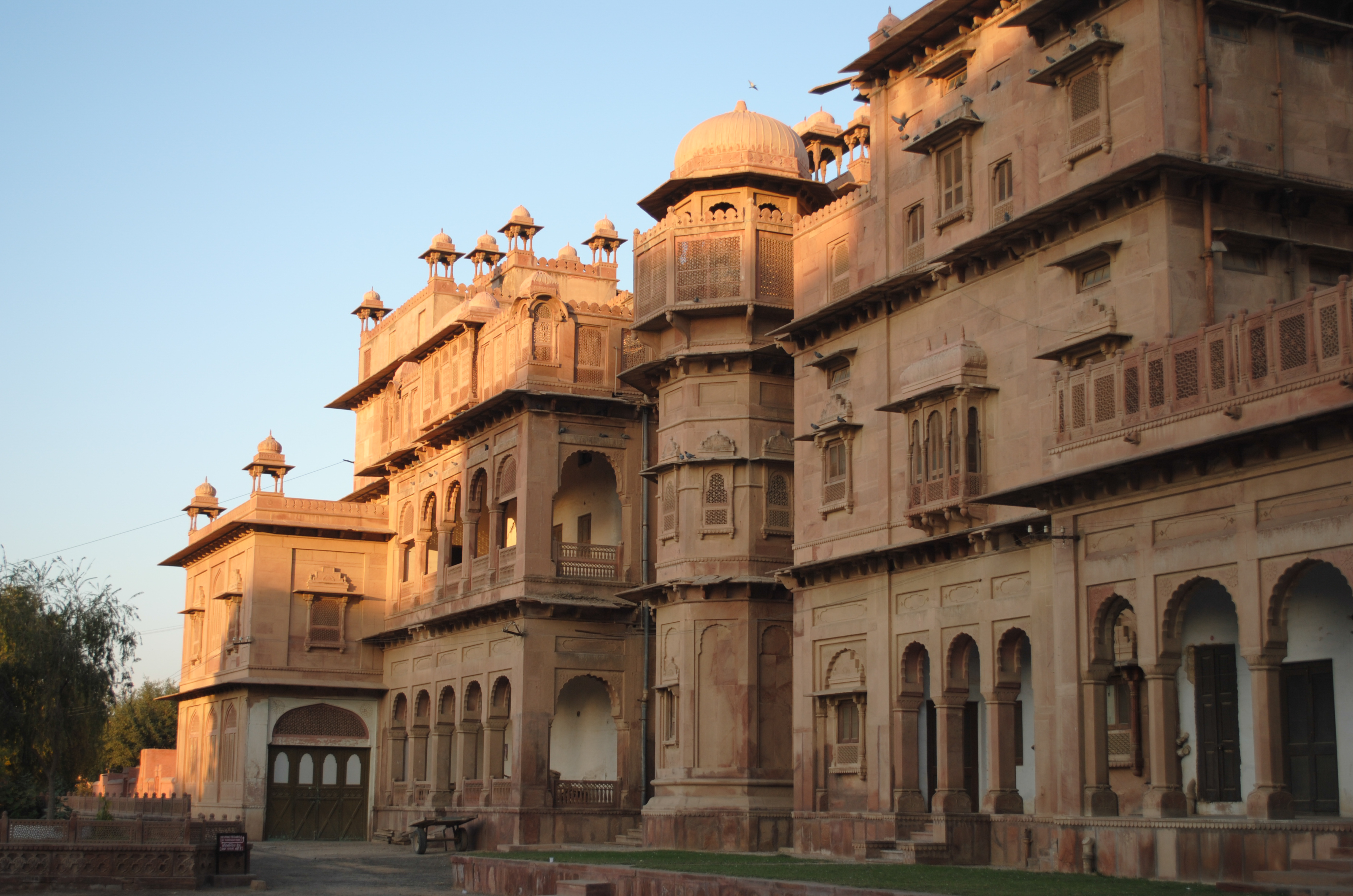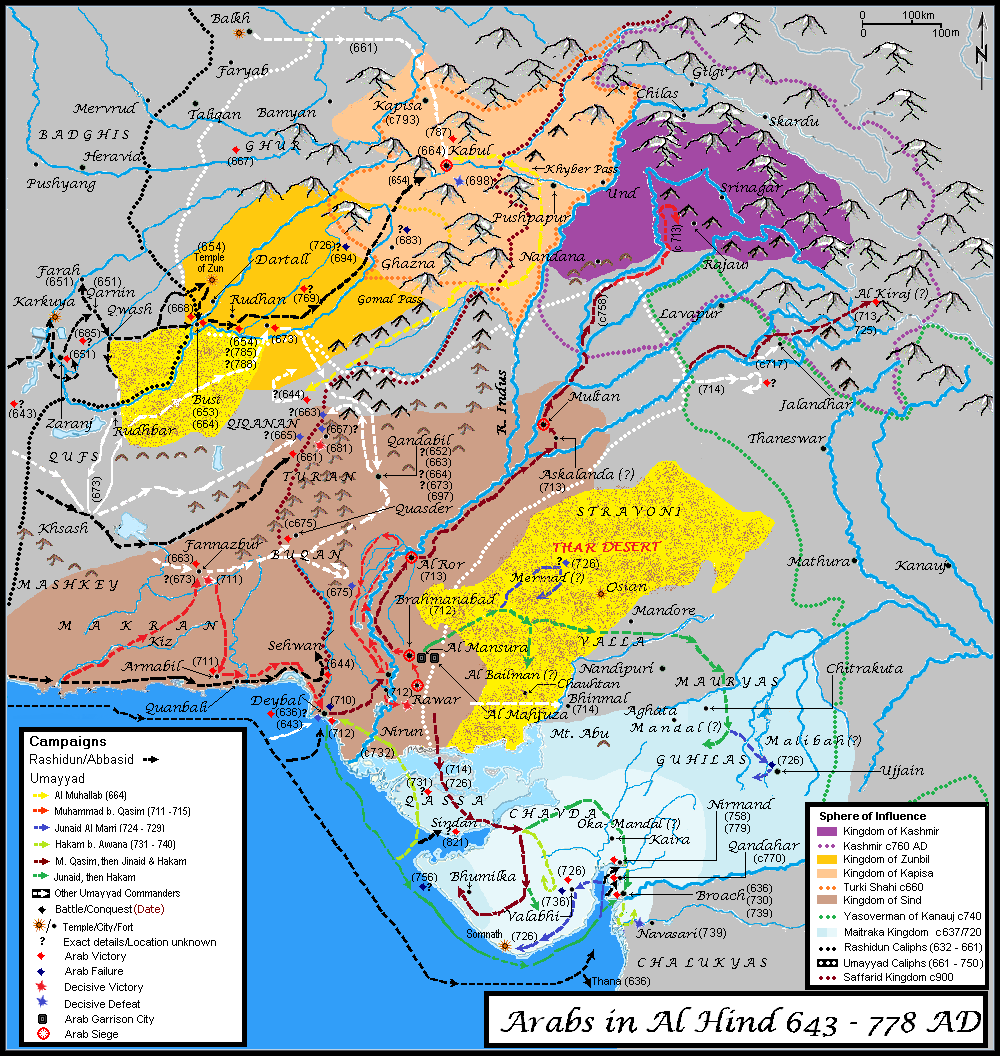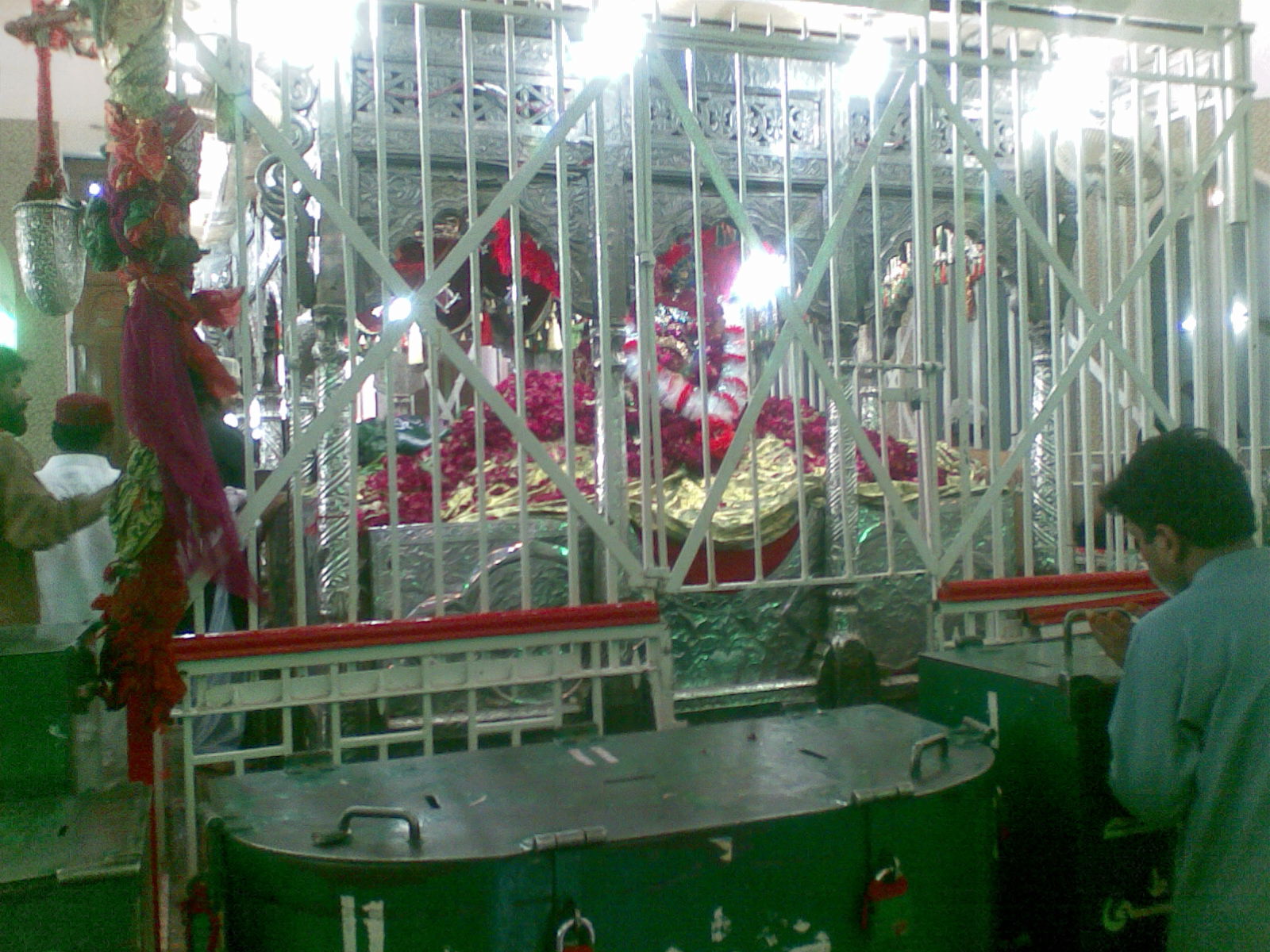|
King Siharas
Siharas (also known as Sayar, Satbar, and Satban) was the Rajput king of Kannauj in the 7th century CE. Life Siharas was the son of Rasal, who preceded him as king of Kannuaj. According to the Chachnama, when Chach of Alor began the expansion of his empire, he defeated Matta, the chief of Siwistan, and besieged him in his fort. Shortly afterward, Matta's garrison surrendered and the chief sued for peace. Chach, however, appointed Matta as his local governor. Not contented, however, Matta sent a messenger to Agham Lohana Agham Lohana was the powerful king of Brahmanabad, (in Sindh, modern Pakistan) contemporary and opponent to Chach of Alor. Agham was a Buddhist and belong to Lohana clan. Biography Agham Lohana is described in the Chachnama as a ruler of Brahmanab ... for assistance. This plan fell through when Agham's messengers were arrested by those loyal to Chach. Upon Chach's death, Matta traveled to Kannuaj, which was flourishing at the time. He requested assistance ... [...More Info...] [...Related Items...] OR: [Wikipedia] [Google] [Baidu] |
Rajput
Rajput (from Sanskrit ''raja-putra'' 'son of a king') is a large multi-component cluster of castes, kin bodies, and local groups, sharing social status and ideology of genealogical descent originating from the Indian subcontinent. The term Rajput covers various patrilineal clans historically associated with warriorhood: several clans claim Rajput status, although not all claims are universally accepted. According to modern scholars, almost all Rajput clans originated from peasant or pastoral communities. Over time, the Rajputs emerged as a social class comprising people from a variety of ethnic and geographical backgrounds. During the 16th and 17th centuries, the membership of this class became largely hereditary, although new claims to Rajput status continued to be made in the later centuries. Several Rajput-ruled kingdoms played a significant role in many regions of central and northern India from seventh century onwards. The Rajput population and the former Rajput state ... [...More Info...] [...Related Items...] OR: [Wikipedia] [Google] [Baidu] |
Kannauj
Kannauj (Hindustani pronunciation: ənːɔːd͡ʒ is a city, administrative headquarters and a municipal board or Nagar Palika Parishad in Kannauj district in the Indian state of Uttar Pradesh. The city's name is a corrupted form of the classical name ''Kanyakubja''. It was also known as ''Mahodaya'' during the time of Mihira Bhoja Kannauj is an ancient city. It is said that the Kanyakubja Brahmins who included Shandilya (teacher of Rishi Bharadwaja) were held one of the three prominent families originally from Kannauj. In Classical India, it served as the center of imperial Indian dynasties. The earliest of these was the Maukhari dynasty, and later, Emperor Harsha of the Vardhana dynasty.Tripathi, ''History of Kanauj'', p. 192 The city later came under the Gahadavala dynasty, and under the rule of Govindachandra, the city reached "unprecedented glory". Kannauj was also the main place of war in the Tripartite struggle between the Gurjara-Pratihara, the Palas and ... [...More Info...] [...Related Items...] OR: [Wikipedia] [Google] [Baidu] |
Chachnama
''Chach Nama'' ( sd, چچ نامو; ur, چچ نامہ; "Story of the Chach"), also known as the ''Fateh nama Sindh'' ( sd, فتح نامه سنڌ; "Story of the conquest of Sindh"), and as ''Tareekh al-Hind wa a's-Sind'' ( ar, تاريخ الهند والسند; "History of India and Sindh"), is one of the main historical sources for the history of Sindh in the seventh to eighth centuries CE, written in Persian. The text, which purports to be a Persian translation by `Ali Kufi (13th-century) of an undated, original Arabic text, has long been considered to be the story of the early 8th-century conquests by the Umayyad general Muhammad bin Qasim. The text is significant because it has been a source of colonial understanding of the origins of Islam and the Islamic conquests in the Indian subcontinent. It influenced the debate on the partition of British India and its narrative has been included in the state-sanctioned history textbooks of Pakistan. However, according to Manan ... [...More Info...] [...Related Items...] OR: [Wikipedia] [Google] [Baidu] |
Chach Of Alor
Chach (c. 631-671 AD) ( sd, چچ)Wink, André. (1991)''Al- Hind, the Making of the Indo-Islamic World: The slave kings and the Islamic conquest''. 2, p. 153 Leiden: Brill. was a Hindu Brahmin king of Sindh region of the Indian subcontinent in the mid-7th century AD. Chach expanded the kingdom of Sindh, and his successful efforts to subjugate surrounding monarchies and ethnic groups into an empire covering the entire Indus valley and beyond were recorded in the ''Chach Nama''. Biography Chach was a Brahmin who rose to a position of influence under Rai Sahiras II, king of Sindh and a member of the Rai dynasty. Chach was the chamberlain to the King. According to the Chachnama, the last Rai emperor, Rai Sahasi II, died through illness without issue. By that time, Chach was in complete control of the affairs of the kingdom and had developed illicit sexual relations with Sahasi's wife (queen Rani Suhanadi). When Rai Sahasi II was near death, Suhanadi explained to Chach that the kin ... [...More Info...] [...Related Items...] OR: [Wikipedia] [Google] [Baidu] |
Matta (chief)
Mahattah, or Matta, was the chief and later feudatory of Siwistan, in what is now Pakistan. He ruled from Sehwan Sharif, in the Sindh region, in the 7th century CE. Life Matta, a member of the Rai dynasty, was chief of Siwistan in what is today Pakistan. He succeeded his father as chief."Chach sends a messenger to Akham Lohána, chief of Brahmanábád" from the '''', in Elliot, Henry Miers (1867), '' [...More Info...] [...Related Items...] OR: [Wikipedia] [Google] [Baidu] |
Sehwan Sharif
Sehwan ( sd, سيوهڻ شريف, ur, ; also commonly referred to as Sehwan Sharif or ''Noble Sehwan'') is a historic city located in Jamshoro District of Sindh province in Pakistan and on the west bank of the Indus north-west of Hyderabad. The city is renowned for being home of one of Pakistan's most important Sufi shrines, the Shrine of Lal Shahbaz Qalandar.The city also holds the status of taluka under Jamshoro District. It was previously under Dadu District however, after establishing the Jamshoro District, Sehwan was linked with Jamshoro District. Owing to the popularity of its Sufi shrine, the terms "Sehwan" and "Qalandar" are often used interchangeably in Pakistan. Sehwan is one of Pakistan's most important spiritual centres, along with other shrines such as the Shrine of Abdullah Shah Ghazi in Karachi, Data Durbar Complex in Lahore, Bari Imam in Noorpur Shehan near Islamabad, and the lustrous tombs of the Suhrawardi Sufis in Multan. History Sehwan is probably th ... [...More Info...] [...Related Items...] OR: [Wikipedia] [Google] [Baidu] |
Agham Lohana
Agham Lohana was the powerful king of Brahmanabad, (in Sindh, modern Pakistan) contemporary and opponent to Chach of Alor. Agham was a Buddhist and belong to Lohana clan. Biography Agham Lohana is described in the Chachnama as a ruler of Brahmanabad; he is also noted to have controlled other adjacent territories known as ''Lakha'', '' Sama'' and '' Sahata'' He is estimated to have ruled around 632 AD. Agham Lohana professed Buddhism Decline and fall of Buddhism: a tragedy in ancient India by K. Jamanadas Chach of Alor, Chach after consolidating his hold on [...More Info...] [...Related Items...] OR: [Wikipedia] [Google] [Baidu] |
Chandra (Chach Nama)
Chandra or Chandar was a Brahmin ascetic who succeeded his brother, Chach of Alor, as king of Sindh region of the Indian subcontinent. An account of Chandar's reign is presented in the ''Chach Nama'', a recording of this period of Sindhi history and the broader history of the Indian subcontinent. Life and activity prior to reign According to the ''Chach Nama'', the Brahmin Chach of Alor was chamberlain and secretary to Rai Sahasi II, king of Sindh region of the Indian subcontinent. Chach ascended to the throne by marrying the king's widow, and appointed Chandar as his deputy. Chandar assisted in the administration of the kingdom during Chach's successful campaigns of expansion, and succeeded Chach upon his death. Conflict with Kannuaj After Chach's death, Matta, the ruler of Sehwan Sharif, began to conspire against Chandar. Matta had formerly been the autonomous chief of Siwistan; however, he had been subjugated during one of Chach's campaigns, and intended to regain independ ... [...More Info...] [...Related Items...] OR: [Wikipedia] [Google] [Baidu] |
Kashmir
Kashmir () is the northernmost geographical region of the Indian subcontinent. Until the mid-19th century, the term "Kashmir" denoted only the Kashmir Valley between the Great Himalayas and the Pir Panjal Range. Today, the term encompasses a larger area that includes the Indian-administered territories of Jammu and Kashmir and Ladakh, the Pakistani-administered territories of Azad Kashmir and Gilgit-Baltistan, and the Chinese-administered territories of Aksai Chin and the Trans-Karakoram Tract. Quote: "Kashmir, region of the northwestern Indian subcontinent. It is bounded by the Uygur Autonomous Region of Xinjiang to the northeast and the Tibet Autonomous Region to the east (both parts of China), by the Indian states of Himachal Pradesh and Punjab to the south, by Pakistan to the west, and by Afghanistan to the northwest. The northern and western portions are administered by Pakistan and comprise three areas: Azad Kashmir, Gilgit, and Baltistan, ... The southern and ... [...More Info...] [...Related Items...] OR: [Wikipedia] [Google] [Baidu] |
Ramal
Ramal is a village and municipality in the Ujar Rayon of Azerbaijan Azerbaijan (, ; az, Azərbaycan ), officially the Republic of Azerbaijan, , also sometimes officially called the Azerbaijan Republic is a transcontinental country located at the boundary of Eastern Europe and Western Asia. It is a part of th .... It has a population of 778. References * Populated places in Ujar District {{Ujar-geo-stub ... [...More Info...] [...Related Items...] OR: [Wikipedia] [Google] [Baidu] |
Chach Nama
''Chach Nama'' ( sd, چچ نامو; ur, چچ نامہ; "Story of the Chach"), also known as the ''Fateh nama Sindh'' ( sd, فتح نامه سنڌ; "Story of the conquest of Sindh"), and as ''Tareekh al-Hind wa a's-Sind'' ( ar, تاريخ الهند والسند; "History of India and Sindh"), is one of the main historical sources for the history of Sindh in the seventh to eighth centuries CE, written in Persian. The text, which purports to be a Persian translation by `Ali Kufi (13th-century) of an undated, original Arabic text, has long been considered to be the story of the early 8th-century conquests by the Umayyad general Muhammad bin Qasim. The text is significant because it has been a source of colonial understanding of the origins of Islam and the Islamic conquests in the Indian subcontinent. It influenced the debate on the partition of British India and its narrative has been included in the state-sanctioned history textbooks of Pakistan. However, according to Mana ... [...More Info...] [...Related Items...] OR: [Wikipedia] [Google] [Baidu] |
History Of Uttar Pradesh
The history of Uttar Pradesh the Northern Indian state, stretches back technically to its formation on 1 April 1937 as the North-Western Provinces of Agra and Awadh, but the region itself shows the presence of human habitation dating back to between 85,000 and 73,000 years ago. The region seems to have been domesticated as early as 6,000 BC. The early modern period in the region started in 1526 after Babur invaded the Delhi Sultanate, and established the Mughal Empire covering large parts of modern Uttar Pradesh. The remnants of the Mughal Empire include their monuments, most notably Fatehpur Sikri, Allahabad Fort, Agra Fort, and the Taj Mahal. The region was the site of the Indian Rebellion of 1857, with revolts at Meerut, Kanpur, and Lucknow. The region was also a site for the Indian Independence movement with the Indian National Congress. After independence in 1947, the United Provinces were renamed Uttar Pradesh in 1950. In 2000, the state of Uttarakhand was car ... [...More Info...] [...Related Items...] OR: [Wikipedia] [Google] [Baidu] |





